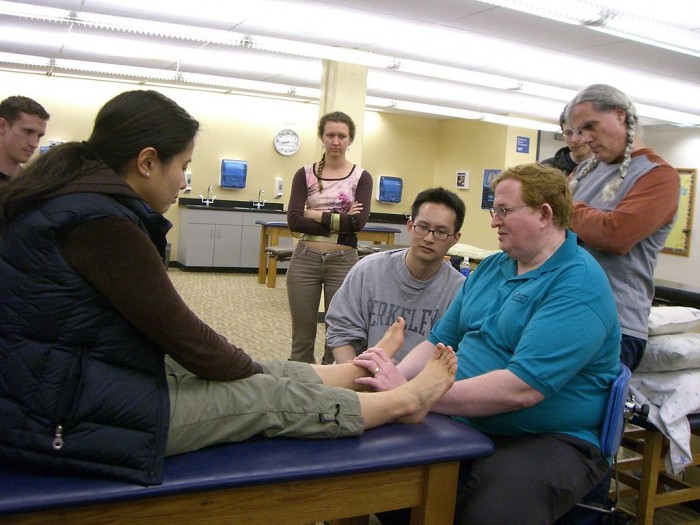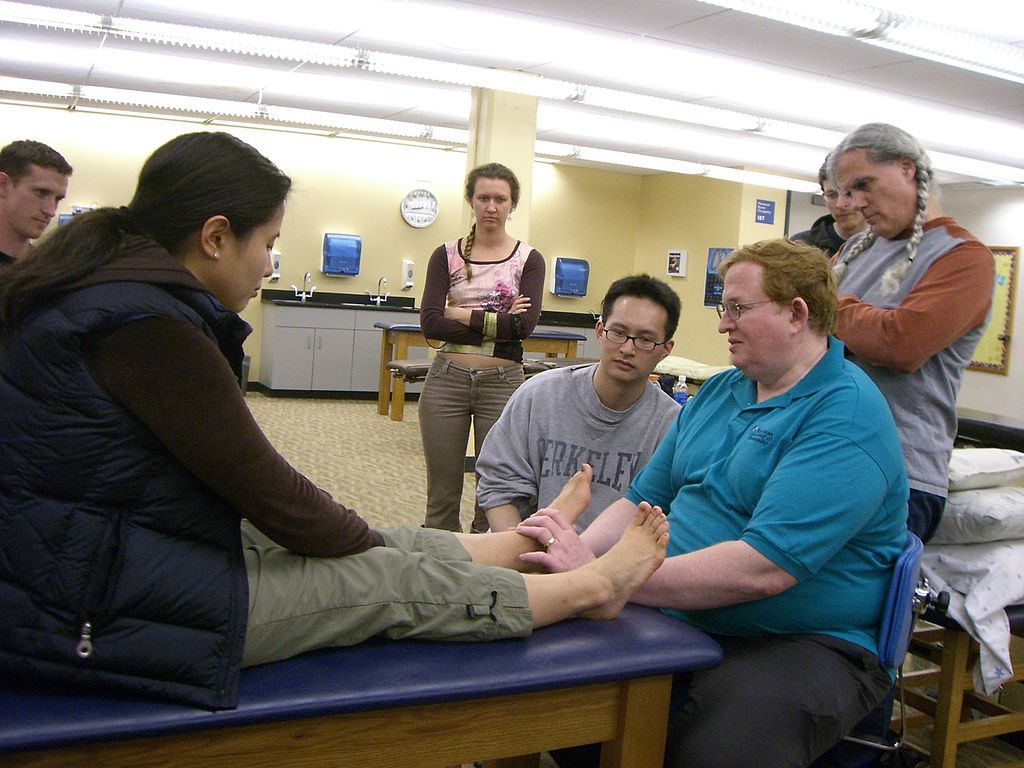Osteopathy and physiotherapy are two of the medical modalities popular among senior citizens, patients recuperating from injury, and people seeking relief from body pains caused by certain disorders. Albeit their main objective is the same (mainly to help the patient in pain relief, recovery from injury, and improvement of bodily functions) and their techniques are overlapping, their respective approach and treatment concept are practically different.
Practitioners of osteopathy are known for their knowledge and expertise on manual techniques. They apply them on their treatments with the aim of restoring balance on the patient’s body framework (particularly the musculoskeletal system) – the balance which may have been lost due to an injury or an improper lifestyle. Eventually, once the balance is seen to have been recovered, the aim shifts from restoration to maintenance if the patient chooses to continue the osteopathic treatments. Osteopathy bases its assessments and treatments on natural principles (without the intervention of invasive medications), acknowledging the power of the human body for self-recuperation, in the journey towards optimal health and wellness.

Physiotherapists are experts on rehabilitative science and methods. Their speciality is to rehabilitate a patient and help recover his/her mobility which may have been damage by an injury, sickness, or (even) congenital disorder. In order to achieve this, physiotherapists make use of a variety of methods which include (but not limited to) therapeutic exercises, guided physical movements, and manual adjustments of bones, joints, and muscles. Sometimes, the aid of tools are utilised to assist in the rehabilitative process; they may include water, mild electrical pulses, temperature (cold and heat), and lighting combinations. Physiotherapy also aims to help patients in relieving pain, preventing some disorders, and improving blood circulation. Better blood circulation eventually results in improved distribution of nutrients and oxygen among the different cells and tissues, smoother cleansing of toxic substances in the body, and faster healing and recuperation making the patient able to achieve the best health possible.
For more detailed specifics of these 2 medical modalities, please read our article about How to Differentiate Physiotherapy, Osteopathy and Chiropractic.
Today, not a few people mistakenly identify the practitioners of these 2 medical branches as one and the same. This is not surprising because, when they come to a physical therapy clinic, they often find that the medical specialist in attendance has the expertise of both modalities. Note that both practices require formal learning, normally a Bachelor’s degree; some practitioners even go the extra-mile of pursuing a Master’s degree.
Although physical therapy or physiotherapy is the more accepted modality in mainstream medicine, many physiotherapists are learning osteopathy and are applying osteopathic techniques in both their diagnoses and treatments. This is mainly because of the involvement of manual manipulation or massage in the practice of physical therapy, which is the core method of treatment in osteopathy.
Licensed and practising physiotherapist, Dr. Karim Tara, has this to say about why he feels the need to widen his speciality through osteopathy…
I have been practising as a physiotherapist… for the last 13 years but despite having good results with my patients I felt that my approach was somewhat limited and that I needed a more holistic approach to satisfy my patients’ needs. I found that osteopathy was the answer.
As a physiotherapist, he could have settled to pursue further learning in other related studies. Yet, he chose osteopathy because of the inspiration he got from a pioneering founder of osteopathic education. He further adds…
Another reason for choosing the BSO was that the (Bachelor of Science of Osteopathy) school is rich in history with its inheritance from John Martin Littlejohn, the founder of osteopathic education in the UK.
John Martin Littlejohn (1867-1947) was a physician of Anglo-American lineage and a pupil of Andrew Taylor Still who happens to be the “Father of Osteopathy.”
References:
“What is the difference between physiotherapy and osteopathy?” Holmes Palace. Retrieved from holmesplace.uservoice.com
Butt, S. “How osteopathy helped me in my physiotherapy practice.” The British School of Osteopathy. Retrieved from www.bso.ac.uk
Image c/o Wikimedia Commons
Share this article:
